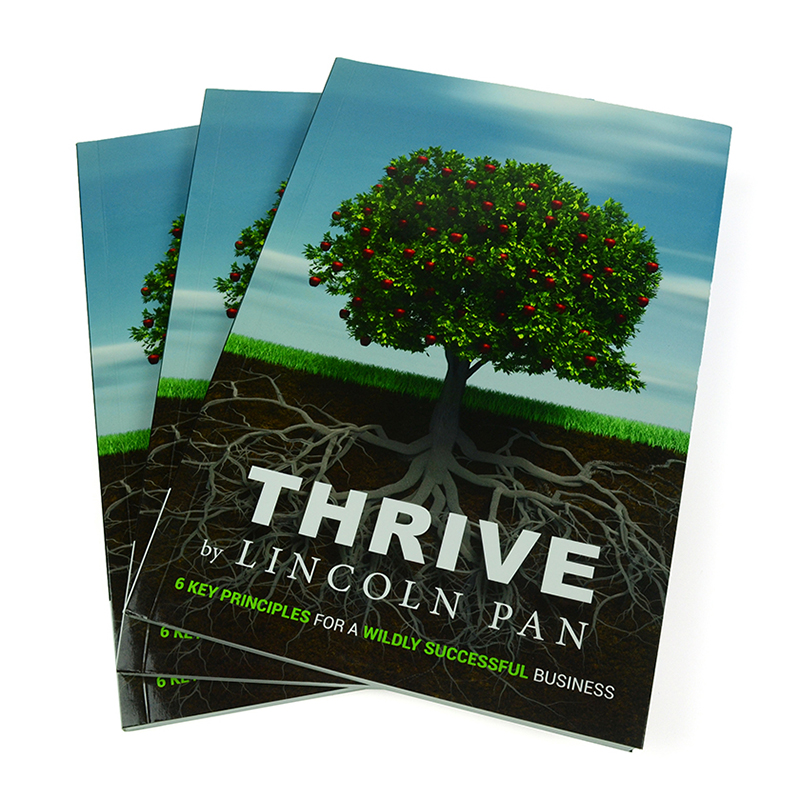fannyzeng's blog
As we all know, some professional design companies have made quite standard printing artwork. But some clients do not know how to format the artwork. They just make the size and layout as they want. So that when the files are sent out for printing, there are various problems that affect the printing. Today, I would like to tell you what problems should be paid attention to and handled in files for hardcover book printing?
Requirements for hardcover printing artwork are as follows:
1. No matter which software is used, please use CMYK mode for design and production. If RGB mode is used, color changes will occur when CMYK printing is switched. If it is not spot color printing, please do not use spot color.
2. The image resolution should not be lower than 300DPI. Because the image printed below 300DPI will not be so clear, affecting the printing effect.
3. After the final draft, please transfer the text to the path and upload it again to avoid being unable to print due to lack of fonts.
4. When prepare your printing artwork. Please reserve 3mm of bleeding outside the size of the printed product. If there is no bleeding, there will be white edges in case of deviation during cutting. And the text is more than 3mm away from the finished product line. Which is also to prevent bleeding error when cutting the content.
5. For black text or lines, please make them 100% black; If it is CMYK, it is easy to have inaccurate overprint.
6. For large areas of black, please use C40K100 to ensure black saturation.
7. Line width must not be less than 0.08mm
8. The spine content of case bound books can be designed. And we must add 15mm of bleeding to the cover, which will fold into the binding of the cover. Many customers only add 3mm bleeding on the cover, which is far from enough. If you are not particularly clear about the cover layout, you can contact us to make a cover template.
9. If there are processes such as hot stamping, bump, local UV, etc. on the cover. Please make a separate PDF for the elements to be processed and design it in black.
If you are not sure whether the files are suitable for printing. You can send us a few pages, will help to check if it is good for printing, if need any change will let you know in time.
Source:https://www.chinaprinting4u.com/9_artwork_requirements_for_hardcover_book_printing-350.htm

When you are reading a book, will you think about how this book is printed? I think most of us not care about this. When read a book, you will find some books can be open flat, but some books are not. I think most of us like the books in good quality.
When a author finish his story after a very long time, the next step he may want the documents turns out to be a physical book. Then he will start to find a printer to assist his implement the desirability. He maybe find a local printer, or print his book oversea to save some cost. We have met some author wanted to print his book oversea but give up because the turn around time. Print oversea you must consider about the shipping time. Some author want to receive the books sooner so he will consider about air shipping, but the air freight is very expensive, if ship via sea would too long. If so, you can choose to send a small quantity via air, and the rest quantity via sea.
When you find a good printer, you will share your files with them. Normally files can be shared via Wetransfer or Dropbox or Google, and you can mail the USB to them if you think that will more comfortable. After receive the files, if no problem then can start to arrange printing. Usually we will print a proof sample book before mass production. From the sample you can view about the binding, paper stock, printing etc. Because the sample is printed via digital machine, while the mass production will be printed via offset machine, so the sample book colors will be slightly difference with the mass production colors. The sample issues can be adjusted when mass production. Once the books are finished, we can take clear pictures and video for you reference.
Packing is also a very important part for a book printing. To make sure the author can receive his books in good conditions, printers will pack the books with strong pallets. We also will add plastic bag inside the box to protect books from moisture. If the shipping way do not need pallets, we will pack the books with double boxes to avoid the books from damage during shipping.
Print oversea, you maybe worry at the beginning. Don't worry, I trust you will enjoy the great service, very cheap price, and very fantastic book quality.
Although cheap and easy-to-read paperback books and e-books have been widely loved by readers, hardcover books have not been eliminated.
Apart from still only do hardcover classic books. Most hot selling novels will have two versions: paperback and hardcover for choice.

Why is the publishers willing to do this kind of repetitive "useless work"?
The traditional practice of European and American publishers is to publish new books in three formats at different intervals. The hardcover edition is the first, which is used to attract book fans and customers with more purchasing power.
If the books selling well, then release a paperback version after a period of sales. Then after a period, they will release a mass-market paperback with a smaller format. One-to-one corresponding to readers with different economic abilities, to fully tap the sales potential of a book.
This strategy is also often seen in the film and television industry. For example, movies are always released before they are released on Blu-ray DVD. The income of movie theaters should be greater than the profits of video stores. Even the cost of hardcover book printing will be higher than softcover book printing. But, on average, the profits of publishing hardcover books are higher than publishing paperback books. So they still choose to print hardcover at first.
Movie buffs always want to see movies first in theaters with good acoustics. Just as book collectors want to get their hands on a beautiful hardcover book as soon as possible. From another point of view, libraries also prefer hardcover books. Because hardcover books are easier to preserve.
The publisher's editors are also careful. They will only publish a paperback edition when sales of the hardcover edition have begun to shrink significantly, but demand is relatively high. If a hardcover book is bestselling, publishers often delay releasing a paperback edition. Even if doing so threatens to stifle the book's sales potential.
But, the value of hardcover books is not only reflected in the profit level. A hardcover is a sign of quality. Hardcover is an expression of the publisher's intent to show booksellers, critics, and readers that this is a noteworthy book.
Why do publishers still publish hardcover books at a greater cost?
With competition from more affordable formats such as paperbacks, e-books and audio, will anyone still buy hardbacks?
As things stand, there's no sign of publishers ditching hardbacks: British hardcover novel sales rose 11% in 2017.
When e-books became popular more than a decade ago. Some experts suggested that the format of the book didn't matter. But they are wrong.
A beautiful hardcover book can bring pleasure. It is worth for cherishing, collecting and passing on. Readers will continue to pay for hardcover books, just as some people would rather pay to see a movie in theaters than on TV.
Maybe you will want to ask here, since the sales of hardcover books are still increasing year by year. Why does the entire paper book market still give people the feeling that it is dying?
The answer is that in the era of electronic reading. Perhaps it is more of a war between paperback books and e-books.
The advent of e-books threatens the market for paperbacks, which are closer in both release time and price. It's as if fewer people are buying DVDs, and people are going to watch them on video sites instead.
But hardcover books still have their regular consumer group. Just like the movie theater business doesn't seem to be affected too much.
"Nowadays, some paperbacks are not selling as well as hardcovers" said a report in The Economist.
Maybe people should have confidence that in this era. Paperbacks may shrink, but hardcovers and thick books will not die either.
Just like the famous Taiwanese book designer Chen Weishen once put forward. In the future, paper books will have new functions.
Yes, books will exist, but in a different form.
Maybe in the future, our judgment of a book will no longer be some simple abstract words. But the appearance of the whole book, the overall feeling, and the state of holding it in hand.
We have all seen how vinyl records turned into CDs. And now we see that CDs are eliminated and turned into MP3 downloads. But there are always a group of people in the world who want to listen to vinyl, so now record companies are still making vinyl. And only top-level music will anyone be willing to buy vinyl discs. Some people are willing to buy hardback book is not paperback, is the same reason.

